NorthEast Radio Watch 12/15/2025: NYC Morning Shakeup
In this week’s issue… NYC morning shows exit - Carton back amidst WFAN shakeup - FM signing off in Canada - More radio centennials
Text and photos by SCOTT FYBUSH
Quick – make a list of the 20 most important and influential top-40 stations of the AM golden age. It’s going to include at least one of Gordon McLendon’s stations, and if it’s not KLIF in Dallas, it’ll be KILT in Houston. (You could make a good case for both.)
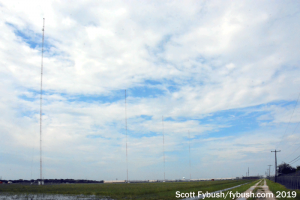
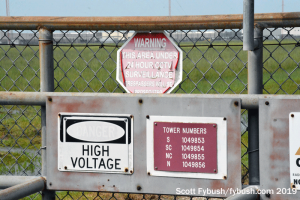
Now make a list of the most successful big-market AM stations in 2020, and narrow it down to exclude the heritage 50 kW clear-channel signals. Who’s still succeeding with 5000 watts? That much smaller list might also have today’s version of KLIF on it (though it’s really the old WFAA 570 that inherited those legacy call letters), KOGO in San Diego, WFLA in Tampa, KCSP in Kansas City… and somewhere near the top, it will also have KILT, today an important part of Entercom’s Houston cluster as the bigger and better-rated of its two AM sports stations.
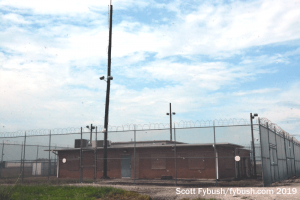

While much has changed about KILT over the decades, one important thing hasn’t: under McLendon and Entercom – and indeed, for more than seven decades, since long before the KILT era – Houston’s 610 has broadcast from the same brick building and same four in-line towers since it first hit the air in 1948.
It’s a magnificent radio time capsule. Let’s pause for a moment of history and then step inside, shall we?
As World War II ended, Houston was growing fast. After entering the war with just three radio stations, by 1947 it had five more signals either on the air or about to hit the airwaves. Among the city’s new broadcasters was W. Albert Lee, proprietor of several hotels in Houston. In 1946, he applied for a new 5000-watt station on 610, a channel that was then so empty that the only stations indicated on his FCC filing as needing protection were XEDX in Sabinas, Mexico and KGGM in Albuquerque, almost a thousand miles to the west.
Lee named his new station KLEE (why not?), built studios in his Milby Hotel, and hit the air just after the start of 1948. (There’s a mystery lurking in the history cards here: they refer to a condition of license having to do with an FM antenna on tower #2, but there’s no sign in the Broadcasting Yearbooks of the era of a KLEE-FM actually being licensed.)
By then, Lee had become enamored of TV, applying for channel 2, which began broadcasting as KLEE-TV early in 1949. The Houston Post soon bought out KLEE-TV, but since it already owned the established KPRC radio, Lee kept his radio station – though not for long, since Lee died in late 1951.
That’s when McLendon entered the picture, buying KLEE radio and renaming it KLBS for his Liberty Broadcasting System in 1952. McLendon sold the station a few years later, then repurchased it in 1957, renaming it KILT (he was, after all, “the Old Scotsman”) and taking it to top-40.
McLendon did finally add an FM, KOST on 100.3, in the early 1960s; he later moved those calls to Los Angeles, changing Houston to KZAP, while it was only under later ownership that 100.3 became KILT-FM, the calls it’s used ever since except for a brief foray as “KXAS” in 1984.)
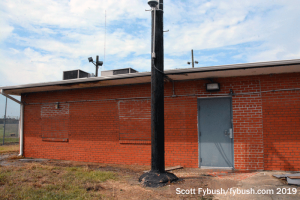
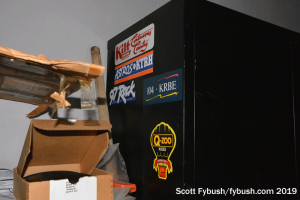
It’s a good bet that the 610 transmitter site felt rather different back in the days of Lee and McLendon. Today, its location on West Road north of downtown is very much part of Houston, just off I-45 between the inner (ironically, “I-610”) and outer (Loop 8) loops that define Houston’s road geography. Back then, the FCC listed it just as “Aldine, Texas,” and it was surely a rural area far away from what was then the urban core of Houston.
You could probably have just driven up the dirt roads right to the windows of the transmitter building back then. Today, the building is all bricked in, and there are several layers of fencing securing the building and the site from the outside world. (It is, I gather, not the most savory part of metro Houston, though it was quiet the afternoon we got there.)
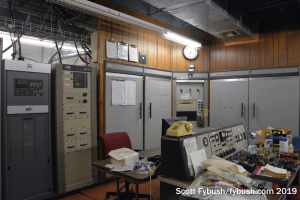
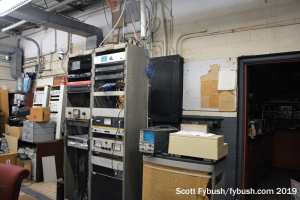
Now can we go inside? We can – and what an inside it is. You know how old radio facilities have that smell that any old radio hand would recognize blindfolded? That’s the smell that greets you when you open the door here, thanks to decades and decades of equipment that’s accumulated inside these hallowed walls.
Right inside the front door is the old office area, where there’s lots of fascinating vintage paperwork going back to the McLendon days, not to mention the many years afterward when the station was doing country under LIN ownership (that’s why the KXAS call showed up briefly on the FM side, matching LIN’s KXAS-TV up in Fort Worth), and then its later years under Westinghouse, CBS/Infinity and now Entercom.
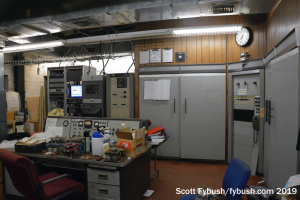
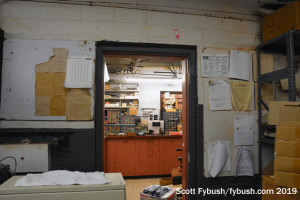
Pull yourself away from the desk and filing cabinet full of history and we can move into the big central transmitter room here. Transmitters have come and gone here – the history cards record a Collins main and aux in the 1960s, a Gates BC5H in the 1970s, and today there’s a BE aux and a Nautel main sitting next to the big phasor cabinets that look to have gone in with the Gates in 1972. (That control desk in the middle of the room, however, looks to have predated the Collins!)
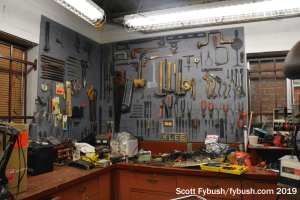
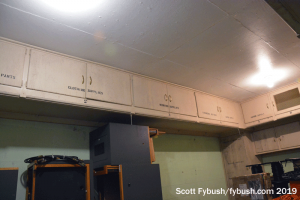
The racks that sit across from the transmitters are, in turn, next to a door into a very well-stocked workshop area; look closely and you’ll even see at least one remnant of the KLEE era on the bench.
Off to the side, there’s a vintage generator in a former garage area, and a small area that was once an engineer’s apartment and is today used for even more storage.
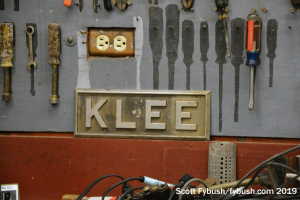
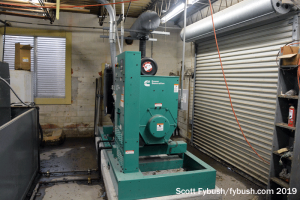
While so many AMs of this era have succumbed to development at their physical sites, or have been all but abandoned when it comes to programming, KILT is still an important player on the Houston dial. Having pioneered sports radio here in 1994, “SportsRadio 610” is still live and local most of the day, not to mention being the flagship station for the Houston Texans.
(One more bit of trivia: in all its years on the air, 610 has had only three studio locations – the original Milby Hotel site, McLendon’s new building at 500 Lovett Blvd. in 1958, and its current cluster location at Greenway Plaza.)
History and current success? It’s a winning combination that would make the Old Scotsman (and maybe even old W. Albert Lee) proud of what’s become of 610.
Thanks to Robbie Green for the tour!

As we announced a few weeks ago, the 2026 edition of the Tower Site Calendar will be the last.
We began publishing it 25 years ago, and the broadcast landscape is radically different now.
Radio World just ran an excellent article about us if you want to know more.
Once it’s gone, that’s it. We won’t be printing any more.
Thank you to everyone who saw our announcement and rushed to buy it. We appreciate you.
(There are some calendars from previous years if you want more of a tower photo fix — all under $5.)
But don’t wait to get this year’s Tower Site Calendar — buy it now!
We are selling the Broadcast Historian’s Calendar again this year, but we have that in an even smaller quantity — definitely don’t hesitate for that.
And visit the Fybush Media Store to check out our selection of books and videos, too!
And don’t miss a big batch of Houston IDs next Wednesday, over at our sister site, TopHour.com!
Next week: More Houston!
In this week’s issue… NYC morning shows exit - Carton back amidst WFAN shakeup - FM signing off in Canada - More radio centennials
In this week’s issue… Veteran newsman returns - Remembering NY's Leitner, RI's Jones - CT AM saved - Maine AM moves - "Indie" adds suburban signals
In this week’s issue… Scripps stations face takeover - Sinclair moves more affiliations - CT stations sold - Maine AM surrendered - Remembering WVBR's Shapiro, WABC's Morgan
In this week’s issue… CT TV legend succumbs to cancer - Remembering PA's Adams - FCC still stalled by shutdown - Pittsburgh morning host exits